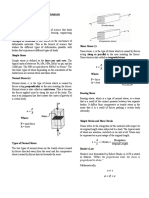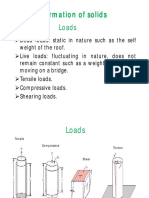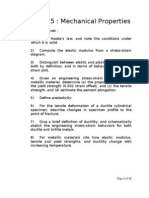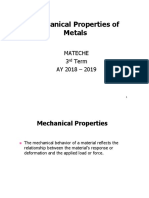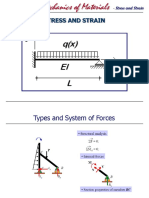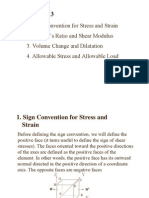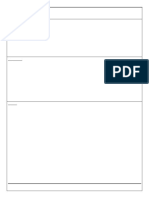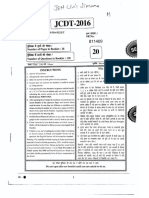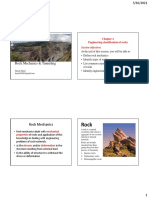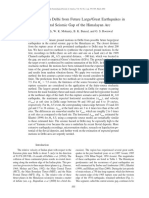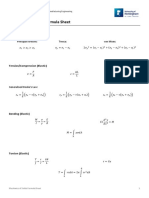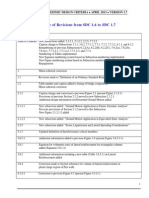0% found this document useful (0 votes)
166 views9 pagesEngineering Mechanics Midterm Guide
The document provides an overview and study guide for a Mechanics of Materials midterm exam. It outlines several key topics to be covered, including stress and strain; Poisson's ratio and modulus of elasticity; deflection of rods under stress and thermal expansion; torsion; combined loadings in pressure vessels; and the Saint Venant principle for axial loads. It also lists the schedule for the exam review, including calculations using scientific notation, a quiz review, and additional practice problems.
Uploaded by
verilaw973Copyright
© © All Rights Reserved
We take content rights seriously. If you suspect this is your content, claim it here.
Available Formats
Download as PDF, TXT or read online on Scribd
0% found this document useful (0 votes)
166 views9 pagesEngineering Mechanics Midterm Guide
The document provides an overview and study guide for a Mechanics of Materials midterm exam. It outlines several key topics to be covered, including stress and strain; Poisson's ratio and modulus of elasticity; deflection of rods under stress and thermal expansion; torsion; combined loadings in pressure vessels; and the Saint Venant principle for axial loads. It also lists the schedule for the exam review, including calculations using scientific notation, a quiz review, and additional practice problems.
Uploaded by
verilaw973Copyright
© © All Rights Reserved
We take content rights seriously. If you suspect this is your content, claim it here.
Available Formats
Download as PDF, TXT or read online on Scribd
/ 9

